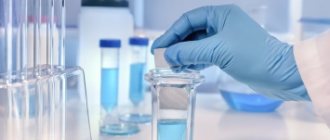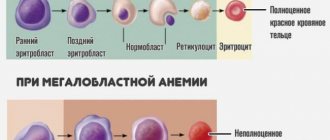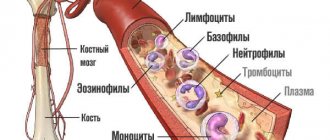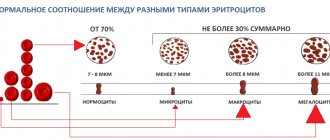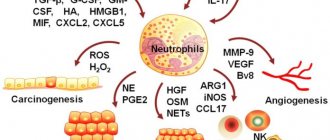Home — For the public
- Map of medical organizations
- Vaccination
- Clinical examination
- Fluorography
- Addresses and opening hours of clinics
- Emergency rooms
- Oncology
- Where to take an HIV test
- Healthy child's office
- Services
- Prevention of CVD
- Disease Prevention
- World Patient Safety Day
- Newspaper "Medical News"
- specialist
- School of Health
— Disease prevention
- HIV infection
- All about vaccination
- All about proper nutrition
- Hepatitis
- Flu
- Dementia
- Schoolchildren's health
- STD
- Tick-borne encephalitis
- Whooping cough
- Measles
- Legionellosis
- Meningococcal infection
- Oncology
- Acute intestinal infection
- Pediculosis
- First aid
- Pneumococcal infection
- Pneumonia
- Prevention of rabies
- Dependency Prevention
- Rotavirus infection
- Diabetes
- Cardiovascular diseases
- Injuries
- Tuberculosis
- Tularemia
- Physical activity
- Obstructive pulmonary disease
- Exotic infections
- Ecology
- Why is swimming in ponds dangerous?
— Oncology — Checking blood for tumor markers
Oncological diseases take second place after cardiovascular pathologies among the causes of death of patients in Russia. Negative statistics are associated with late detection of pathology. According to experts, with the help of early diagnosis, the survival rate of cancer patients can be doubled. There are plenty of methods for this.
Among the most common methods of early diagnosis of cancer is a blood test for specific chemical compounds - tumor markers. Based on its results, it is impossible to accurately determine whether a person has cancer or not. The diagnostic value of the study is the ability to suspect the initial stage of the disease by continuing the study using clinical methods.
What are tumor markers
Tumor markers are specific biomolecules produced by pathologically altered cancer cells. More often they are protein compounds, but can have a different nature: enzymatic, hormonal or receptor. Most of these markers are also synthesized by healthy cells of the body, but in much smaller quantities.
The term “tumor marker” was first introduced in the 60s of the last century by domestic scientists Harry Abelev and Lev Zilber. While conducting research, they discovered that an increase in the AFP protein produced by the placenta during pregnancy is characteristic of malignant liver tumors. This marker was the first to be included in clinical practice in tumor research.
Today, more than two hundred types of specific compounds have been identified, but only about twenty are subject to analysis.
Markers are found in various biofluids at the initial stages of the formation of malignant cells, in the preclinical (asymptomatic) stage of tumor formation. Connections are divided into two types. Markers of high specificity are highly likely to identify a specific disease, while markers of low specificity are characteristic of a number of different pathologies.
Based on the probable location of the tumor, experts identify tumor markers:
- mammary gland;
- testes;
- Bladder;
- pancreas;
- liver;
- esophagus;
- stomach;
- thyroid gland;
- lungs;
- skin;
- prostate gland;
- ovaries;
- uterus;
- intestines.
Doctors are ambivalent about this classification. This is due to the fact that no ideal marker has been identified to date. None of them has 100% specificity, allowing one to unambiguously identify cancer of a specific organ.
References
- TUMOR MARKERS IN BREAST CANCER V.F. Semiglazov, corresponding member of the Russian Academy of Medical Sciences, Doctor of Medical Sciences, Professor V.V. Semiglazov, Doctor of Medical Sciences, Professor G. Dashyan, Candidate of Medical Sciences A. Bessonov, R. Paltuev, Candidate of Medical Sciences, T. Semiglazova, Candidate of Medical Sciences, I. Grechukhina, K. Penkov, A. Vasiliev, A. Manikhas - Candidate of Medical Sciences, Research Institute of Oncology named after. N.N.Petrova, St. Petersburg State Medical University named after. acad. I.P. Pavlova, City Clinical Oncology Dispensary St. Petersburg.
- Baselga J., Tripathy D., Mendelsohn J. et al. Phase II study of weekly intravenous recombinant humanized anti-p185HER2 monoclonal antibody in patients with HER2/neu-overexpressing metastatic breast cancer // J. Clin. Oncol. – 1996; 14: 737–744.
- CobleighM., Vogel C., Tripathy D. et al. Multinational study of the efficacy and safety of humanized anti-HER2 monoclonal antibody in women who have HER2 -overexpressing metastatic breast cancer that has progressed after chemotherapy for metastatic disease // J. Clin. Oncol. – 1999; 17:2639–2648
Why do blood tests for tumor markers?
Analysis for tumor markers is often used as an evaluative test to determine positive (or negative) dynamics in cancer therapy. Based on its results, relapse can be prevented.
Markers allow you to:
- confirm or refute the assumptions of preliminary diagnostics;
- notice the formation of metastases in the absence of other symptoms;
- evaluate the effectiveness of the prescribed therapeutic course.
The study is not recommended as an independent diagnosis due to the large number of false positive (false negative) results. But, in combination with other methods, it helps to identify cancer at an early stage.
What does deviation from the norm indicate?
In oncology, the stage of the disease is diagnosed based on the number of specific proteins, and the probable location of the tumor is determined based on their type.
In addition to cancer, compounds are detected in the presence of cysts, infections, inflammatory processes, and other benign pathologies in the body.
Attention: tumor markers are present in small amounts in the blood of healthy people.
We will provide data on the normal content of such substances in the body and the expected problems if deviations from it are detected.
| tumor marker | maximum standard value | probable location of the tumor | possible other diseases |
| PSA | 4 ng/ml | prostate | infectious prostatitis; adenoma. |
| SA-125 | 30 IU/ml | female reproductive system; pancreas; Gastrointestinal tract; respiratory organs (rare). | endometriosis; ademomyosis; inflammation of the genital organs; liver diseases. |
| hCG | for men - 2.5 IU/ml; 5 IU/ml - for women | placenta; ovaries; testicles. | |
| SA-242 | 30 IU/ml | pancreas; rectum and colon. | inflammation of the gastrointestinal tract; pancreatitis. |
| REA | 5 ng/ml | prostate, thyroid or mammary glands; stomach; liver; bone; reproductive system; stomach. | liver pathologies; intestinal polyposis; pathology of the pancreas; Crohn's disease; tuberculosis; pneumonia; cystic fibrosis. |
| Cyfra 21-1 | 3.3 ng/l | bladder; bronchi; lungs; mediastinum. | inflammation of the kidneys or liver; fibrosis of lung tissue. |
| SA-19-9 | 30 IU/ml | liver; gallbladder; stomach; bladder; reproductive system. | cholecystitis; cholangitis, cholelithiasis; cystic fibrosis. |
| SA-15-3 | 38 IU/ml | breast; Gastrointestinal tract; liver; female genital organs (late stage). | cirrhosis; benign breast tumor; autoimmune processes. |
| B-2-MG | from 670 to 2140 ng/ml | hematopoietic system | autoimmune pathologies; inflammatory processes; liver diseases; renal failure. |
| CA 72-4 | 6.9 U/ml | stomach; ovaries; uterus; pancreas or mammary gland. | gynecological inflammation; cysts; cirrhosis; autoimmune disorders. |
Separately, the AFP marker should be noted. In gynecology, it is used to assess the state of pregnancy. In oncology, it signals the possible development of cancer of the liver, ovaries, breast, bronchi and lungs, and gastrointestinal tract.
For pregnant women, the AFP norm by week is as follows:
- up to 12 - less than 15 U/ml;
- 13-15 - from 15 to 60 U/ml;
- 15-19 - from 15 to 95 U/ml;
- 20-24 - from 27 to 125 U/ml;
- 25-27 - from 52 to 140 U/ml;
- 28-30 - from 67 to 150 U/ml;
- 31-32 - from 100 to 250 U/ml.
Attention: exceeding these indicators may indicate pathologies in the development of the fetus.
In addition, elevated AFP is a sign of hepatitis or cirrhosis.
Based on the data presented in the table, we can conclude that deviations in the indicators of one or another tumor marker indicate the likelihood of developing a number of different diseases. It is not possible to make a diagnosis based only on the content of specific proteins in the blood. To confirm (or deny) the presence of a cancerous tumor in the body, additional diagnostic procedures will be required.
What examination should be performed if markers are detected?
Sometimes women, when borderline tumor marker values are detected, stop being examined, hoping for a benign course of the pathology or its absence, but this is a mistake. Even if you have cancer during this period, there is a high chance of recovery, the main thing is to start treatment on time.
If there are deviations from the norm, it is recommended:
- Visit a mammologist - the doctor will evaluate the test results, advise on lifestyle and prescribe further examination.
- CT or MRI of the breast - these methods show the presence or absence of lumps. If they are detected, the following research method is required.
- A biopsy is the removal of a microscopic piece to determine the type of cells in the lesion. It is carried out at the final stage, after which a final diagnosis is made.
If there are no changes in the breast, an examination of the internal organs is prescribed. First, a survey CT, MRI or ultrasound of the abdominal cavity is done. When a pathological focus is detected, targeted diagnosis is carried out.
Degree of reliability of markers in oncology
Analysis of the content of these substances is very informative for assessing the prescribed therapeutic course for cancer. In primary diagnosis, none of them is used independently. This is due to the lack of specificity of the markers.
The reliability of the readings of specific proteins can be considered using the example of the most common of them. These include the PSA test. This tumor marker should be tested in men for timely detection of prostate cancer. In case of malignant tumors of the gland, this indicator actually exceeds the norm. But it also increases if a benign neoplasm forms in the prostate. As medical practice shows, prostate cancer was not confirmed in most men with elevated PSA levels.
Attention: there are cases when unscrupulous doctors in dubious clinics prescribe unnecessary therapeutic procedures. They not only require serious financial investments, but can also provoke serious complications!
Another indicative marker is CA-125. It grows in the blood of women who have ovarian cancer, but can increase in a large number of other pathologies not related to oncology.
Medicine knows of cases when, in the late stages of the formation of malignant neoplasms in the ovaries, a blood test did not show deviations in the results of any of the 28 protein compounds specific to this disease.
CA-125 is not recommended for testing in the initial stages of the disease in the absence of characteristic symptoms. To analyze the course of the diagnosed pathology, it is considered together with other proteins, as well as ultrasound results.
As part of a comprehensive examination, women with poor heredity or gene mutations need to take tumor markers every six months.
In general, the question of how much one can trust tumor markers remains open today. When interpreting research results, you should pay attention to a number of factors that can distort the data:
- the level of protein content is affected by inflammatory diseases in acute or chronic form;
- CA-125 increases during menstruation;
- smokers are characterized by a twofold increase in the CEA index;
- A normal test result does not guarantee the absence of a tumor.
These are the most common nuances, but there may be other “subtleties”. Only a qualified doctor who can correctly decipher the results can understand them.
General information
CA 125 is a chemical compound of polysaccharide and protein that is an antigen of a certain type of epithelial cell. Normally, a small concentration of the component is present in the cells of the inner layer of the uterus - the endometrium - and in the organ itself as part of some biological fluids. Also, a small amount of CA 125 is secreted by the lining of the abdominal cavity and pleura, epithelial cells of the bronchi, pericardium, gall bladder, intestines, pancreas, kidneys, fallopian tubes, and testes.
A slight increase in CA 125 levels can be observed in expectant mothers in the first trimester of pregnancy or in women during menstrual bleeding. A pathological increase in the concentration of antigen in the blood is recorded in malignant, benign and systemic pathologies. For example, in almost 80% of patients with ovarian cancer, CA 125 values are up to 165 U/ml (with a normal value of up to 35 U/ml). In the first and second stages of cancer, an increase in the indicator is observed in 50% of cases of the disease, but the third and fourth stages are characterized by a persistent increase in the tumor marker in almost every woman. Therefore, the CA 125 test is considered quite specific and indicative, but not suitable for early diagnosis of cancer due to low sensitivity.
The analysis for CA 125 is of greatest importance in determining the dynamics of tumor marker changes, which will allow assessing the effectiveness of the chosen treatment regimen and correctly predicting remission.
Indications for tumor marker analysis
During the period of active growth, cancer tissue absorbs nutrients and releases breakdown products, many of which are toxic. These processes affect human health, causing characteristic symptoms.
Any history taking begins with interviewing the patient. Doctors may be alert to the following changes in your health:
- a sharp decrease in body weight for no apparent reason;
- increased fatigue;
- refusal of food;
- constant or recurrent pain;
- frequent weakness;
- low-grade body temperature (from 37.1 to 38.0 °C for a long time).
Oncological pathology is also reflected in the results of standard blood tests. A general analysis can reveal an increase in ESR, a decrease in leukocytes or hemoglobin. Negative changes are also noted in the “biochemistry” of the blood.
Malignant neoplasms are characterized by a decrease in protein content, acceleration of blood clotting, and an increase in ESR.
Such research results in themselves do not indicate the growth of pathologically altered cells, but are a reason for additional examination. Including testing for tumor markers.
Exceptions are people from risk groups who are recommended to undergo this procedure regularly.
These include patients:
- with a hereditary predisposition (if cancer was diagnosed in relatives up to the second generation);
- upon returning from places of man-made disasters;
- survivors of significant intoxication;
- in the presence of benign tumors;
- living in settlements with poor ecology.
For men over 50 years of age, it is advisable to do a PSA test annually to timely detect changes in the activity of the prostate gland. The analysis is also indicated for those who have already been diagnosed with cancer. Studies are prescribed not only to patients undergoing treatment, but also to those who have been successfully cured. This allows you to stop possible relapses of the disease. Preliminary preparation of a person for analysis increases the likelihood of obtaining an accurate result.
In what cases is research necessary?
The examination is usually prescribed not for the initial detection of the disease, but to monitor treatment. The level of the marker determines changes in the tumor during therapy. But sometimes such diagnostics are also indicated for primary pathologies of the mammary glands. These include:
- presence of lumps in the chest;
- change in skin and or nipple color;
- constant pain;
- deformation of the nipple area;
- presence of discharge.
Before testing blood for markers, an instrumental examination (CT, MRI or biopsy) is prescribed. A referral for analysis is issued after cancer is detected.
How to donate blood for tumor markers
The attending physician should give specific recommendations on restrictions before blood collection. They depend on which specific protein will be studied.
The general rules are as follows:
- donate blood at least 8 hours after your last meal;
- try not to be nervous during the procedure;
- interrupt serious training for a week;
- stop drinking alcohol three days before;
- It is advisable not to smoke immediately before collecting biomaterial;
- If in the next week the patient underwent x-rays or other examinations, the doctor must be informed about this.
Other requirements may need to be met. Thus, if you suspect a prostate tumor, it is advisable to abstain from sexual intercourse for 7 days; it is better not to test blood for tumor markers of the female reproductive system during menstruation.
What are the features of the research procedure?
To donate blood correctly, you must follow several rules that will reduce the likelihood of errors. Primary requirements:
- a short rest before the procedure;
- giving up alcohol, smoking, and taking medications the day before the examination;
- The test should be taken on an empty stomach; only drinking clean boiled water is allowed.
The blood collection procedure is no different from the usual one. The sample is taken from a vein according to standard rules.
Where can I get tested for tumor markers?
You can get tested for tumor markers free of charge (with compulsory medical insurance and a referral from a therapist or oncologist) at the clinic. The result is usually ready within a day. However, not all medical institutions have the necessary equipment.
You can undergo examination in diagnostic centers or private clinics, but you should not decide on your own whether it is necessary. You should donate blood only as prescribed by your doctor. The specialist will give an adequate assessment of the patient’s condition and select the most specific compounds for a particular case. Research on all groups of tumor markers is meaningless. Plus it's not cheap. Prices range from 300 to 2000 rubles for each substance, depending on the region and clinic.
Tumor markers are effective indicators of tracking tumor response to patient therapy. As a method of initial detection of oncological pathologies, they do not guarantee an accurate result. By analyzing specific proteins, one can suspect the presence of cancer cells and other dangerous diseases. An oncologist should decipher the received data. Self-diagnosis often leads to erroneous conclusions, incorrect treatment and serious health consequences.
When to analyze
There are a number of reasons why an examination is necessary to determine the amount of tumor marker CA 125. A blood test should be taken if the following signs are detected:
- weight loss;
- periodic increase in temperature;
- presence of false urge to urinate or defecate;
- frequent constipation;
- painful sensations in the lower abdomen, which can radiate to the lumbar area;
- discomfort during intimacy;
- menstrual irregularities;
- bloody discharge from the genital tract;
- abdominal enlargement;
- enlarged lymph nodes in the groin area.
Such manifestations indicate the active development of pathology. The tumor has become large in size, affecting the normal functioning of various body systems. The earliest manifestations may be:
- apathetic state;
- depression;
- constant feeling of weakness;
- fast fatiguability;
- loss of interest in favorite activities;
- loss of appetite.

